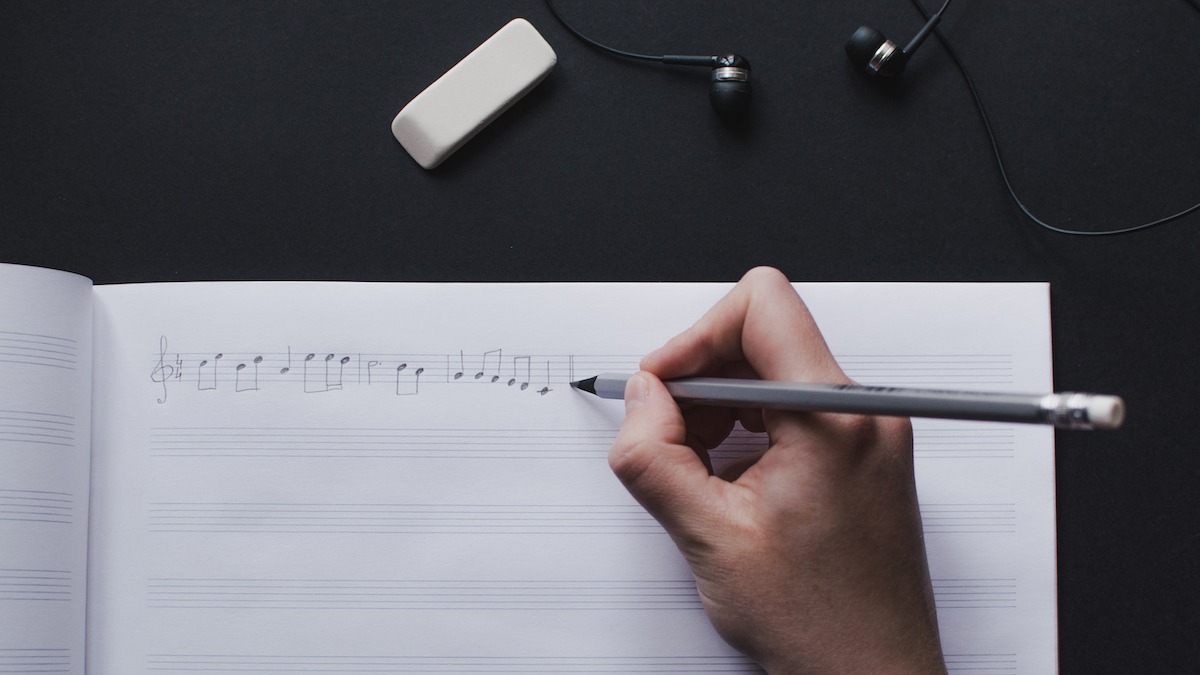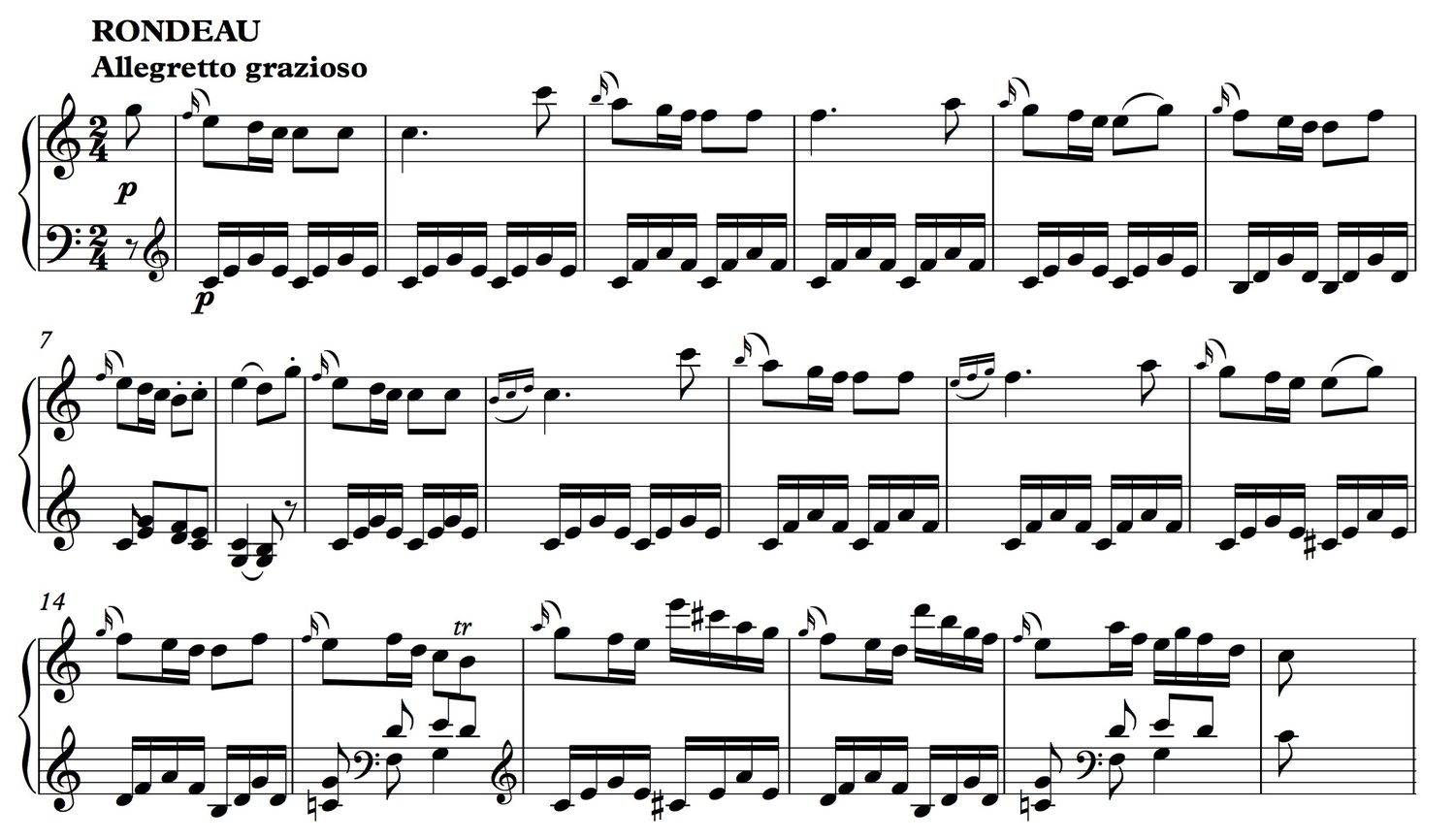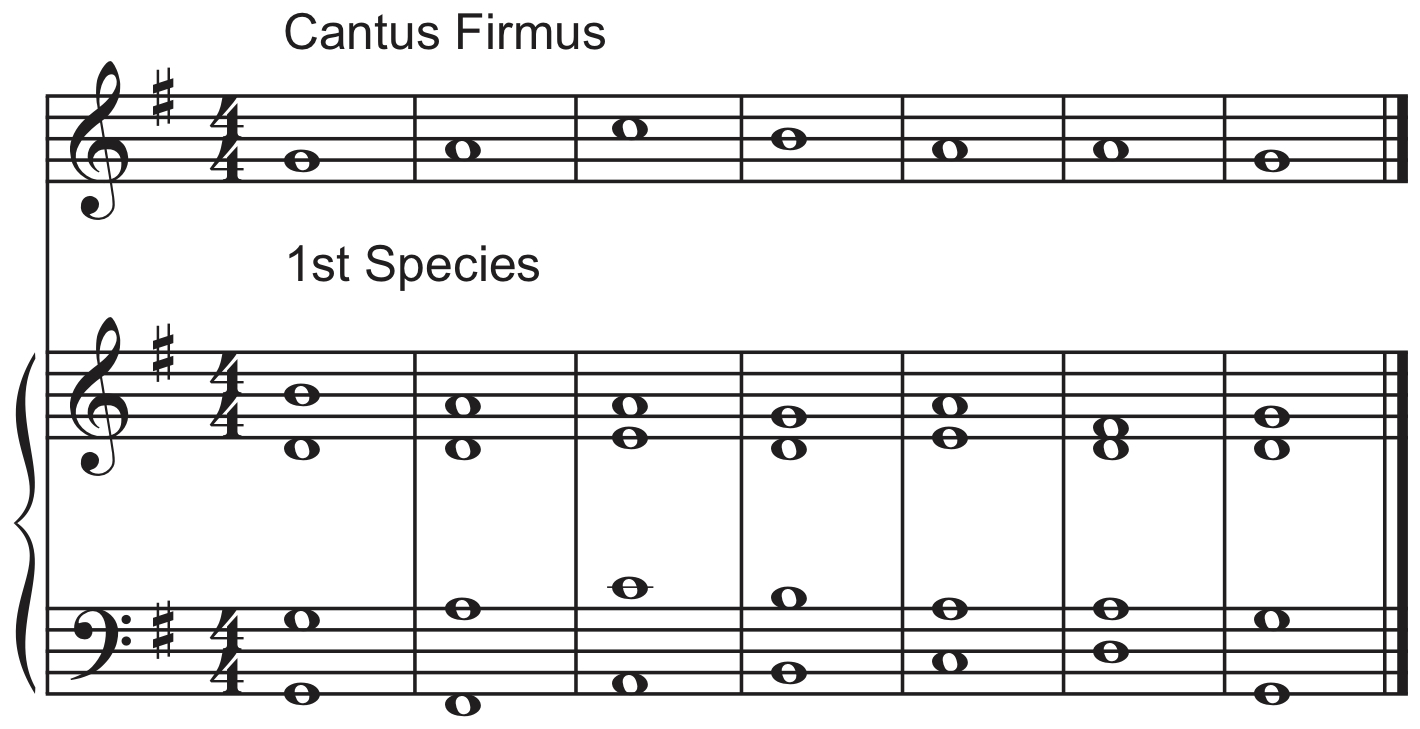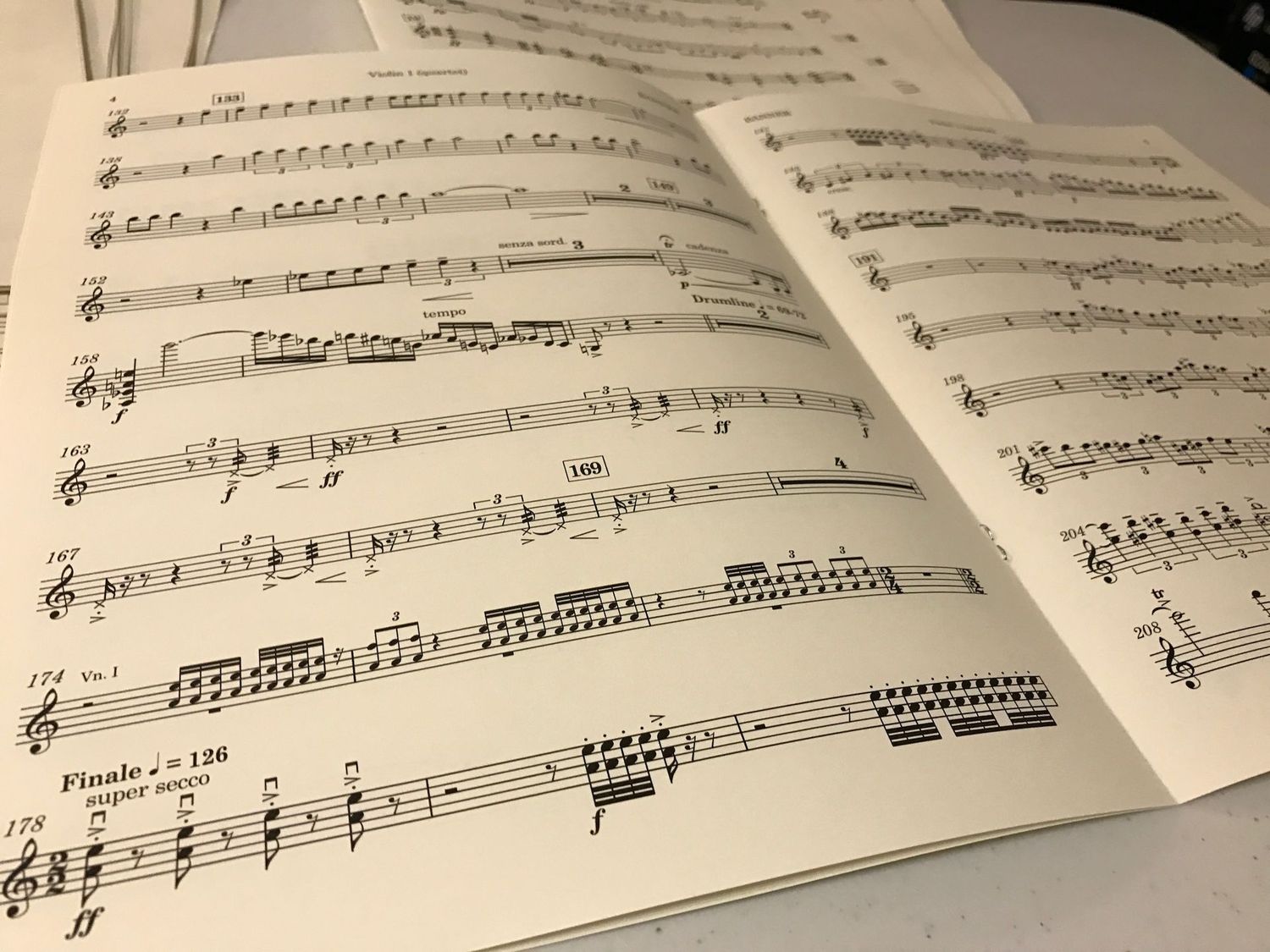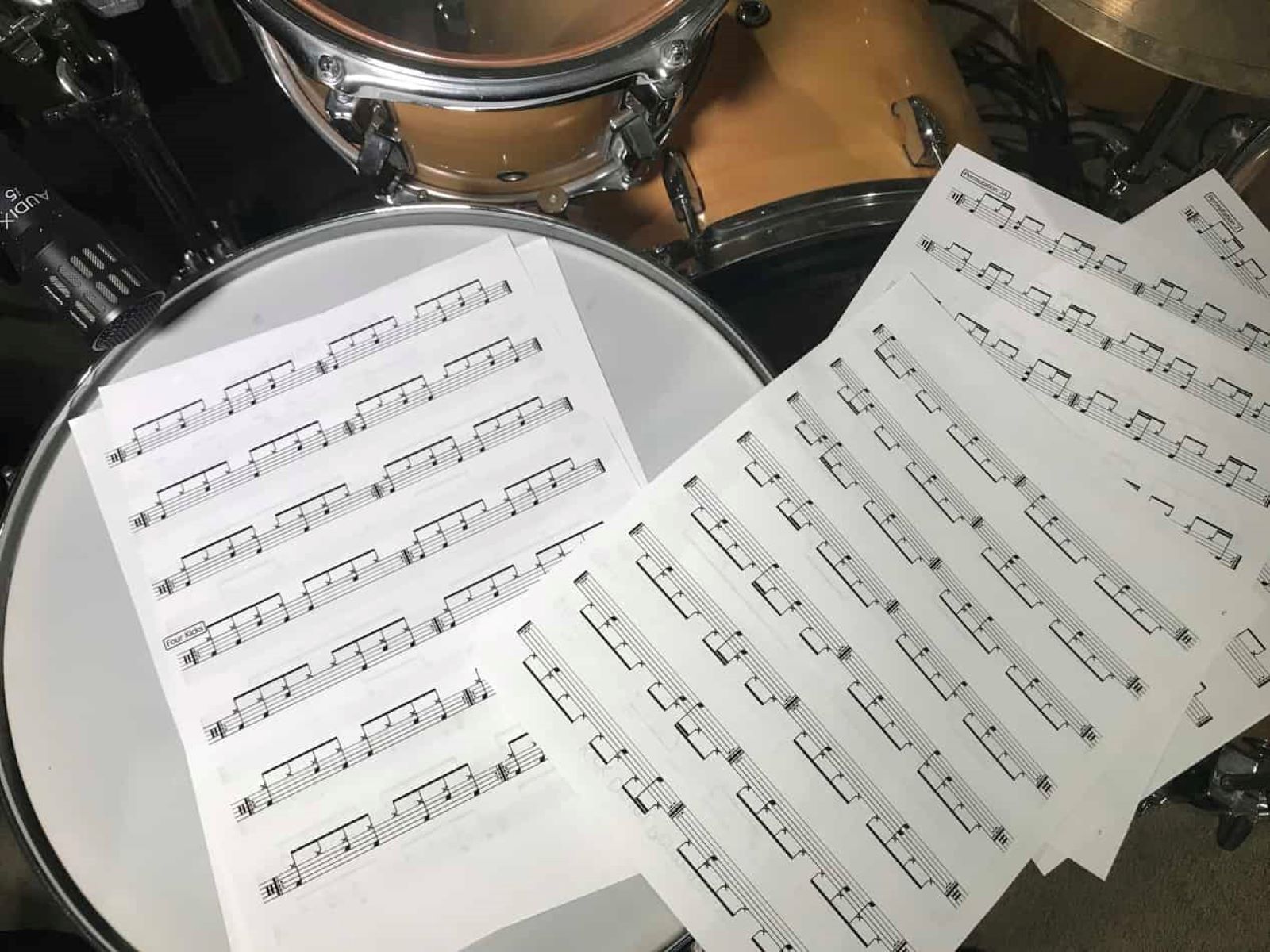Home>Production & Technology>Background Music>How To Write Background Music


Background Music
How To Write Background Music
Modified: January 22, 2024
Learn how to write captivating background music with our comprehensive guide. Master the art of creating the perfect musical backdrop for your videos, films, and projects.
(Many of the links in this article redirect to a specific reviewed product. Your purchase of these products through affiliate links helps to generate commission for AudioLover.com, at no extra cost. Learn more)
Table of Contents
- Introduction
- Understanding the Purpose of Background Music
- Choosing the Right Genre and Style
- Creating a Catchy Melody
- Establishing a Harmonious Chord Progression
- Incorporating Rhythm and Percussion
- Setting the Tone and Mood
- Adding Dynamic Variation
- Balancing the Music with the Visuals
- Editing and Polishing the Background Music
- Conclusion
Introduction
Background music plays a crucial role in enhancing the overall experience of various forms of media, including films, television shows, video games, and advertisements. Its primary purpose is to create an emotional connection with the audience and enhance the narrative or visual elements of the content it accompanies. Background music has the power to evoke feelings of excitement, suspense, joy, or sadness, adding depth and dimension to the overall storytelling.
Writing background music requires a unique set of skills and a deep understanding of music theory. It involves carefully crafting melodies, harmonies, rhythms, and dynamics to create the perfect sonic backdrop for a particular scene or project. In this comprehensive guide, we will explore the essential elements and techniques involved in writing background music that captures the mood, atmosphere, and message you want to convey.
Whether you’re a filmmaker, game developer, content creator, or simply someone interested in music production, this article will provide you with valuable insights and practical tips on how to write captivating background music that elevates your project to new heights.
Understanding the Purpose of Background Music
Background music serves as a subtle yet powerful element in various forms of media. It is designed to enhance the viewer or listener’s experience by adding depth, emotion, and atmosphere to the overall content. Understanding the purpose of background music is crucial in effectively utilizing its potential.
One of the primary functions of background music is to establish the tone and mood of a scene or project. It sets the emotional context, creating a sense of anticipation, excitement, or suspense. For example, a fast-paced, energetic piece may be used to accompany an action-packed scene, while a soft, melancholic melody may enhance a romantic or dramatic sequence.
Background music also has the ability to elicit emotional responses from the audience. By utilizing specific musical elements such as melody, harmony, and rhythm, composers can tap into the listener’s emotions and intensify the impact of a particular moment or storyline.
Moreover, background music helps to guide the audience’s attention and focus. It can emphasize key moments, cues, or transitions within the content, providing audio cues that complement the visual elements. By strategically placing moments of silence or utilizing dynamic variations, composers can effectively direct the viewer’s emotions and attention to important plot developments or visuals.
Another important purpose of background music is to establish a sense of continuity and cohesion throughout a project. It creates a seamless flow between different scenes or segments, tying them together and providing a consistent sonic backdrop. This helps to enhance the overall narrative and engagement for the viewer or listener.
Lastly, background music is often used to enhance brand identity and recognition. In commercials or advertisements, for instance, a distinct musical theme or motif can reinforce the brand’s message and create a lasting impact on the audience.
By understanding the purpose and potential of background music, composers and producers can effectively harness its power to create memorable and captivating experiences in a wide range of media.
Choosing the Right Genre and Style
When writing background music, one of the first decisions you’ll need to make is choosing the appropriate genre and style that aligns with the project’s vision and target audience. The right genre and style can greatly enhance the impact and effectiveness of the music.
Start by considering the genre of the content you’re working on. If it’s a period piece set in the 1920s, for example, you may want to explore genres such as jazz or swing. Alternatively, if it’s a sci-fi or futuristic project, electronic or ambient music might be more fitting. Understanding the genre of the content will provide a foundation for the musical choices you make.
Next, consider the style of the background music. Each genre has its own unique style variations that can evoke different emotions and create specific atmospheres. For example, within the realm of electronic music, you might choose between a fast-paced and energetic style for an action scene or a more ethereal and ambient style for a reflective moment.
It’s important to also consider the target audience when selecting the genre and style. Different demographics and age groups may have different musical preferences. For instance, a younger audience might resonate more with contemporary pop or rock elements, while an older demographic might prefer classical or jazz-inspired compositions.
Furthermore, take into account the cultural connotations associated with certain genres and styles. For example, using traditional Chinese instruments and melodies in a background score for a martial arts film set in ancient China can lend authenticity and enhance the visual storytelling. It’s crucial to be mindful of cultural sensitivities and appropriateness when utilizing specific musical elements.
Ultimately, the key is to choose a genre and style that not only aligns with the project but also captivates the intended audience. It should evoke the desired emotions, effectively support the narrative or visual elements, and enhance the overall experience for the viewer or listener.
Experimentation and exploration within different genres and styles can be valuable, as it allows for the discovery of unique and unexpected musical combinations that can elevate the project to new creative heights. By taking the time to carefully choose the right genre and style, you lay a strong foundation for the rest of the background music creation process.
Creating a Catchy Melody
A catchy melody is the heart and soul of any memorable background music. It is the melodic line that hooks the listener, resonates in their minds, and enhances the emotional impact of the content. Creating a catchy melody requires careful attention to musical elements and compositional techniques.
First and foremost, a strong melody should be memorable. It should contain melodic motifs or phrases that are easily recognizable and can be hummed or sung. Repetition of musical phrases helps to reinforce the melody and make it stick in the listener’s mind. However, it’s important to strike a balance between repetition and variation to keep the melody interesting and engaging.
Consider the emotional tone and mood of the scene or project and reflect that in the melody. Compose melodies that convey the desired emotions, whether it’s joy, sadness, tension, or excitement. This can be achieved through the use of specific intervals, note choices, and rhythmic patterns. For example, a melody with ascending intervals tends to create a sense of upliftment and positivity, while descending intervals evoke a more melancholic or introspective atmosphere.
Variation is also crucial in creating an engaging melody. Explore different rhythmic patterns, note durations, and intervals to add interest and complexity to the melody. Use unexpected leaps or jumps to create moments of surprise or anticipation. However, be mindful of striking the right balance, as excessive complexity can make the melody too difficult to follow and remember.
In addition, consider the pacing and phrasing of the melody. Break the melody into smaller phrases or musical sentences, allowing for natural breathing points between phrases. This creates a sense of rhythm and flow, enhancing the overall musical structure. Experiment with different note durations and rests to add dynamics and create moments of tension and release.
While writing a catchy melody, it’s important to trust your instincts and allow yourself to be inspired by the project and the emotions it evokes. Don’t be afraid to try out different ideas, rearrange notes, and explore unconventional melodic choices. Some of the most memorable and iconic melodies come from taking risks and pushing creative boundaries.
Finally, remember that simplicity can be powerful. A catchy melody doesn’t have to be overly complex or convoluted. Sometimes, the most effective melodies are the ones that are straightforward, easily recognizable, and resonate with the listener on a deep emotional level.
By focusing on creating a catchy melody that aligns with the project’s vision and evokes the intended emotions, you can lay a strong foundation for the rest of the background music composition.
Establishing a Harmonious Chord Progression
A harmonious chord progression serves as the harmonic foundation of any background music. It provides a sense of stability, supports the melody, and contributes to the overall emotional impact of the music. Creating a harmonious chord progression involves understanding the relationship between different chords and utilizing various musical techniques.
First, it’s important to establish the key of the music. The key determines the set of notes and chords that will be used throughout the composition. Choose a key that complements the mood and atmosphere you want to create. Major keys often convey a sense of positivity and brightness, while minor keys evoke a more somber or melancholic mood.
In a chord progression, chords are typically built using combinations of three or more notes. Select chords that harmonize well with each other within the chosen key. The most common chord progression is the I-IV-V, where the I chord represents the tonic, the IV chord is the subdominant, and the V chord is the dominant. This progression provides a sense of resolution and stability.
Experiment with different chord progressions to add depth and variation to the background music. The ii-V-I progression is commonly used in jazz and provides a sophisticated and rich sound. The vi-IV-I-V progression is popular in pop music and creates a catchy and uplifting atmosphere. Don’t be afraid to explore unconventional progressions that add a unique and unexpected twist to the music.
Understanding chord inversions can also enhance the harmonic texture of the background music. Inversions involve rearranging the order of the notes within a chord. This can create a smooth and flowing progression by allowing the bass line to move in a melodic manner. Experiment with different inversions to create interesting chord voicings and add movement to the music.
Additionally, consider the rhythm and tempo of the chord progression. The rhythm can greatly impact the mood and energy of the music. Syncopated rhythms can add a sense of tension and excitement, while steady and consistent rhythms provide a more stable and grounded feel. The tempo can also influence the overall atmosphere, with faster tempos lending themselves to energetic and dynamic scenes, while slower tempos evoke a more reflective or dramatic mood.
Explore different musical techniques such as modulation or borrowing chords from other keys to add complexity and variety to the chord progression. Modulation involves changing the key temporarily, which can create a sense of development or transition in the music. Borrowing chords from other keys adds unexpected and unique harmonies that can captivate the listener’s attention.
Ultimately, the goal is to create a harmonious chord progression that complements the melody and supports the overall emotional impact of the background music. Experiment with different combinations, progressions, and techniques to find the perfect balance that enhances the narrative and atmosphere of the project.
Incorporating Rhythm and Percussion
Rhythm and percussion are essential components of background music. They provide a sense of groove, drive the energy of the music, and enhance the overall impact of the composition. Incorporating rhythm and percussion effectively involves utilizing various rhythmic patterns and percussion instruments to create a cohesive and engaging sound.
Start by establishing a rhythmic foundation for the music. Consider the tempo and feel of the piece—whether it’s a slow, laid-back groove or a fast, driving rhythm. The rhythm sets the pace and energy of the music and should be in sync with the visual or narrative elements of the project.
Explore different rhythmic patterns that complement the melody and chord progressions. Syncopation, or playing rhythms that accent off the main beats, can add a sense of tension and excitement to the music. Experiment with different note durations, accents, and rests to create rhythmic variation and interest.
Percussion instruments play a crucial role in adding texture and dynamics to the background music. Experiment with a variety of percussion instruments, such as drums, shakers, tambourines, or hand percussion, to enhance the rhythm and groove. Each instrument has a unique tone and character, and the combination of different percussion instruments can create intricate and captivating rhythms.
Consider the placement and intensity of percussion accents. Accents and hits can be strategically placed to create emphasis on important moments in the music or to highlight visual cues in the content. Use different playing techniques and dynamics to add depth and variation to the percussion parts.
Rhythm and percussion can also be used to add a sense of movement or action to the music. Experiment with driving rhythms, syncopated patterns, and percussive fills to create energy and excitement during fast-paced or action-packed scenes. Conversely, for more introspective or atmospheric moments, explore softer and more subtle percussion elements to create a sense of space and intimacy.
Remember that rhythm and percussion should not overpower the melody or the other musical elements. They should work harmoniously with the rest of the composition, supporting and enhancing the overall sound. Pay attention to the balance between the different elements of the music, ensuring that the rhythm and percussion complement and elevate the mood and atmosphere of the project.
Lastly, trust your creativity and experimentation when incorporating rhythm and percussion. Explore different patterns, instrument combinations, and rhythmic techniques to find the perfect balance that brings the background music to life and captivates the listener’s attention.
Setting the Tone and Mood
Setting the tone and mood of background music is essential in creating the desired atmosphere and emotional impact for a scene or project. The right tone and mood can evoke specific emotions and immerse the audience further into the narrative or visual elements. To effectively set the tone and mood, it’s important to consider various musical elements and techniques.
Start by analyzing the content and understanding the overall tone and mood it aims to convey. Is it a lighthearted comedy, a suspenseful thriller, or a heartfelt drama? The musical choices should align with the tone and mood of the project to create a cohesive and immersive experience.
Consider the tempo of the music. A faster tempo can create a sense of excitement and energy, while a slower tempo can evoke a more relaxed or introspective mood. The rhythm and tempo should be chosen to complement the visual or narrative elements of the scene.
Explore different musical scales and modes to set the desired mood. Major scales often create a sense of happiness, brightness, or triumph, while minor scales can elicit feelings of melancholy, tension, or mystery. Experiment with different scale options to find the one that resonates with the intended mood.
The choice of instruments can also greatly influence the tone and mood of the music. For example, orchestral instruments are often associated with epic and cinematic atmospheres, while electronic instruments can create a more modern or futuristic feel. Select instruments that reflect and enhance the desired mood of the project.
Dynamic variation is crucial in setting the tone and mood. Experiment with different dynamic levels, gradually building intensity for climactic moments or using softer dynamics for more intimate or reflective scenes. Changes in dynamics add depth and emotional impact to the music.
Additionally, consider the musical textures and timbres that can enhance the desired mood. Layering multiple instruments or adding subtle harmonic or textural elements can create a rich and immersive sonic experience. Experiment with different combinations and arrangements to achieve the desired mood.
Don’t underestimate the power of silence or minimalistic approaches. Moments of silence can create a sense of tension or offer a break in the music, allowing the audience to digest and reflect on what they have experienced. Simple, stripped-down arrangements can evoke a sense of intimacy or vulnerability.
Ultimately, setting the tone and mood of background music requires a deep understanding of the project, its emotional core, and the intended impact. By carefully selecting the tempo, scale, instruments, dynamics, and textures, you can create a cohesive and immersive musical backdrop that transports the audience into the desired emotional space.
Adding Dynamic Variation
Dynamic variation is a crucial element in background music that adds depth, emotion, and interest to the composition. By incorporating changes in volume and intensity, dynamic variation can enhance the overall impact of the music and captivate the listener’s attention. Here, we explore the importance of dynamic variation and techniques to effectively incorporate it into your background music.
Dynamic variation refers to the contrast between soft and loud, or quiet and intense, moments in the music. These variations can create a sense of tension and release, highlight important moments in the narrative, and evoke specific emotions. Soft dynamics can convey intimacy, vulnerability, or subtlety, while louder dynamics can evoke power, excitement, and high energy.
One technique to create dynamic variation is adding crescendos and decrescendos. A crescendo gradually increases the volume and intensity of the music, building anticipation and tension. A decrescendo, on the other hand, gradually decreases the volume and intensity, creating a sense of release or diminishing energy. These techniques can be used to emphasize climactic moments or highlight changes in the narrative.
Another technique is utilizing accents and staccato notes. Accents are notes played with a stronger attack or emphasis, creating a momentary increase in volume and intensity. Staccato notes are short and detached, adding rhythmic energy and a sense of bounce to the music. Strategic placement of accents and staccato notes can add interest and dynamic contrast.
Pause and silence are powerful tools in creating dynamic variation. Moments of silence can create a sense of tension, anticipation, or reflection. They provide a break in the music, allowing for a buildup of anticipation before a dramatic or impactful moment. Silence can also be used to create contrast, emphasizing the impact of the music when it returns.
Rhythmic variation is another effective way to add dynamic interest to your background music. Experiment with changes in rhythm patterns, note durations, and rests. Syncopated rhythms, for example, can create a sense of energy and unpredictability. Subtle rhythmic changes can add complexity and keep the listener engaged.
It’s important to note that dynamic variation should be thoughtfully planned and executed to serve the narrative or visual elements of the project. Consider the emotions you want to convey and how dynamic changes can complement those emotions. Map out the structure of your music, identifying key moments where dynamic variation can enhance the impact.
Remember to strike a balance between soft and loud, and use dynamic variation to enhance the overall composition rather than overpowering the other musical elements. The changes in dynamics should flow naturally and weave seamlessly with the melody, harmony, rhythm, and other musical components.
By incorporating dynamic variation in your background music, you add depth, emotion, and interest to the composition. It helps to engage the listener, direct their attention to important moments, and create a truly immersive and impactful experience.
Balancing the Music with the Visuals
One of the key considerations when creating background music is achieving a harmonious balance between the music and the visuals. The purpose of background music is to enhance and support the narrative or visual elements of a project, and a careful balance ensures that the music seamlessly integrates with the visuals to create a cohesive and immersive experience for the audience.
First and foremost, it’s crucial to closely analyze and understand the visuals you’re working with. Pay attention to the pacing, mood, and transitions of the scenes. Consider the emotional dynamics and key moments that need musical emphasis. By having a clear understanding of the visuals, you can better tailor your music to complement and enhance the overall storytelling.
Choose musical elements that align with and enhance the visual content. Consider the tempo, rhythm, melody, and dynamics of the music and how they correspond to the visual cues and on-screen action. Fast-paced action scenes may call for energetic and rhythmic music, while softer or slower moments may require more atmospheric and melodic compositions.
When balancing the music with the visuals, it’s important to achieve a proper audio mix. Ensure that the music doesn’t overpower the dialogue or other sound effects, and that it doesn’t get lost in the background. Test your music against the visuals to find the right volume levels, making adjustments as necessary. The goal is to create a seamless integration where the music enhances the visuals without overwhelming them.
Pay attention to the emotional cues and subtext of the visuals. The music should effectively capture and augment the emotions conveyed by the visuals. By aligning the mood, tone, and dynamics of the music with the on-screen emotions, you can create a more immersive and impactful experience for the audience.
Transitions between scenes are critical moments for balancing the music with the visuals. Smooth transitions can be achieved by maintaining consistency in the musical elements, such as tempo or key, across different scenes. This helps to create a sense of coherence and continuity. However, creative variations or subtle changes in the music can also be used to reflect the shifting tones or moods between scenes.
Collaboration and communication between the music composer and the visual creators are vital throughout the process. Discuss the desired emotions, themes, and moments that need musical emphasis. By working closely together, you can ensure that the music and visuals are in sync and create a cohesive and impactful audio-visual experience.
Remember that the primary objective of background music is to serve and enhance the visuals. The music should work hand-in-hand with the visual content to evoke emotions, capture the desired atmosphere, and guide the audience’s experience. By achieving a harmonious balance between the music and the visuals, you can create a truly immersive and compelling overall production.
Editing and Polishing the Background Music
Editing and polishing are crucial steps in the process of creating background music. They ensure that the music is refined, cohesive, and aligned with the vision and objectives of the project. Through careful attention to detail and meticulous refining, you can enhance the overall quality and impact of the background music.
Begin by reviewing the composition as a whole. Focus on the structure, flow, and pacing of the music. Consider if any sections need to be trimmed or extended to better fit the visuals or narrative elements. Ensure that the music aligns with the desired emotional arc of the project and that there is a sense of progression and development throughout.
Pay close attention to transitions between different sections of the music. Smooth transitions are essential for creating a seamless and coherent listening experience. Consider how each section leads into the next and make any necessary adjustments to ensure a smooth and natural flow.
Next, refine the instrumentation and orchestration. Listen carefully to the balance between different instruments or layers within the music. Make any necessary adjustments to ensure that each instrument is clear and audible, and that they blend together harmoniously. Consider if any instruments or elements need to be added or removed to better serve the project’s vision.
Pay attention to the details of the mix and ensure that the individual elements of the music are well-balanced and equalized. Adjust the volume levels of each instrument or layer so that they blend together seamlessly. Additionally, focus on panning and spatial placement of the elements to create a sense of depth and width in the mix.
Take the time to refine the dynamics of the music. Make sure the changes in volume and intensity are smooth and intentional, adding depth and emotion to the composition. Consider if any dynamic variations need to be emphasized or softened to better align with the visuals or narrative cues.
Consider the overall tone and mood of the music and ensure that it consistently supports the desired atmosphere of the project. Use equalization and effects processing to shape the overall tonal qualities of the music. Experiment with reverb, delay, or other effects to create a sense of space and depth that enhances the overall listening experience.
Lastly, listen to the music with a critical ear and make any necessary adjustments or refinements. Pay attention to any areas that feel repetitive or lack impact. Consider if additional musical variations, changes in timbre or instrumentation, or subtle rhythmic or melodic variations could enhance those areas.
Remember that the editing and polishing process is subjective and may require multiple iterations. Take breaks and listen to the music with fresh ears to gain perspective. Consider seeking feedback from others who can provide valuable insights and objective opinions.
Through careful editing and polishing, you can refine and elevate the background music to its fullest potential. By creating a cohesive, balanced, and well-polished composition, you can create a truly immersive and impactful audio experience that enhances the visual elements of the project.
Conclusion
Writing background music is an art form that requires a combination of technical skill and creative intuition. It involves carefully crafting melodies, harmonies, rhythms, and dynamics to create the perfect sonic backdrop for a scene or project. Throughout this comprehensive guide, we have explored the essential elements and techniques involved in writing captivating background music.
Understanding the purpose of background music and its role in enhancing the overall experience of a project is crucial. By choosing the right genre and style, composers can create a musical foundation that complements the visuals and resonates with the target audience. Creating a catchy melody, establishing a harmonious chord progression, and incorporating rhythm and percussion are key steps in transforming the music into a captivating and memorable composition.
Setting the tone and mood of the background music is essential in evoking the desired emotional response from the audience. By selecting the right musical elements and techniques, composers can enhance the atmosphere and immerse the viewers or listeners into the narrative. Adding dynamic variation and balancing the music with the visuals ensure a seamless integration and create a cohesive and immersive audio-visual experience.
Lastly, through the process of editing and polishing, composers can refine and elevate the background music to its fullest potential. By carefully reviewing the composition, refining the instrumentation, adjusting the mix and dynamics, and paying attention to the details, the music can be refined into a cohesive and impactful composition.
Writing background music is a creative and fulfilling endeavor, and it requires a balance between technical know-how and artistic expression. By incorporating the techniques and principles discussed in this guide, composers can create background music that enhances the emotional impact of a project, captivates the audience, and helps tell a compelling story.
Remember to always trust your intuition, experiment with new ideas, and refine your skills through practice and exploration. With dedication and passion, you can craft background music that adds depth, emotion, and immersive quality to any visual or narrative project.


